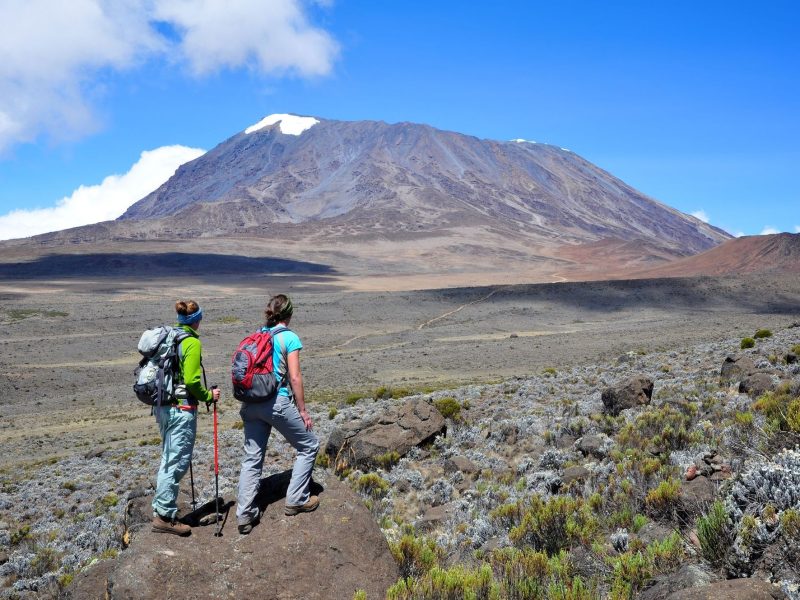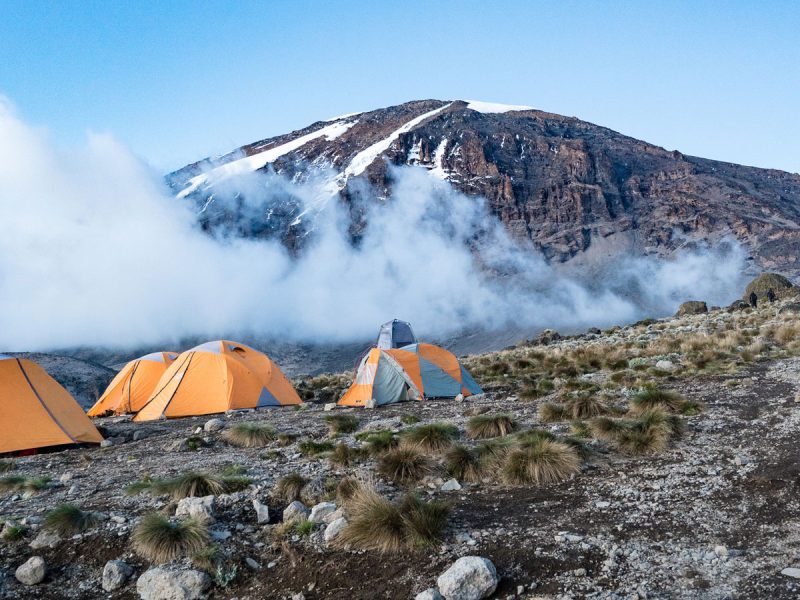

Trekking Mountain Kilimanjaro: A Complete Guide to Conquering Africa’s
Trekking Mountain Kilimanjaro is an adventure unlike any other. As Africa’s tallest mountain, standing at 5,895 meters (19,341 feet), it draws thousands of hikers each year who dream of reaching its snow-capped Uhuru Peak. Unlike many other towering summits, Kilimanjaro doesn’t require technical mountaineering skills, making it accessible to many outdoor enthusiasts. However, the trek is no walk in the park. It requires preparation, determination, and the right strategy to overcome high-altitude challenges.
In this guide, we’ll cover everything you need to know about trekking Mountain Kilimanjaro, including the best routes, difficulty levels, preparation tips, what to pack, and how to train for the climb.
Best Routes for Trekking Mountain Kilimanjaro
There are several routes to the summit, each offering unique landscapes, challenges, and experiences. Choosing the right route depends on your fitness level, experience, and how much time you have.
Marangu Route (Coca-Cola Route)
- Difficulty: Moderate
- Duration: 5–6 days
- Pros: Cheapest route, hut accommodations, steady incline
- Cons: Lower success rate due to shorter acclimatization
Marangu is the only route with hut accommodations instead of tents. However, it has a lower success rate since it doesn’t allow much time for altitude adjustment.
Machame Route (Whiskey Route)
- Difficulty: Challenging
- Duration: 6–7 days
- Pros: Scenic views, better acclimatization
- Cons: Steeper trails, more strenuous
The Machame Route is one of the most popular paths due to its breathtaking scenery and higher success rate. However, it is physically demanding, with steep ascents and descents.
Lemosho Route
- Difficulty: Moderate to Difficult
- Duration: 7–8 days
- Pros: Stunning views, great acclimatization, lower traffic
- Cons: More expensive
Lemosho is one of the most scenic and successful routes, offering diverse landscapes and wildlife sightings.
Rongai Route
- Difficulty: Moderate
- Duration: 6–7 days
- Pros: Less crowded, gradual ascent
- Cons: Less scenic, higher cost
This is the only route approaching Kilimanjaro from the north, making it drier and less crowded.
Northern Circuit Route
- Difficulty: Moderate
- Duration: 9–10 days
- Pros: Best acclimatization, highest success rate, scenic views
- Cons: Expensive, longest route
The Northern Circuit is the newest and longest route, allowing hikers to fully acclimatize for a higher success rate.
Umbwe Route
- Difficulty: Very Difficult
- Duration: 5–6 days
- Pros: Direct and challenging, least crowded
- Cons: Poor acclimatization, low success rate
This is the most demanding route, recommended only for experienced hikers with strong endurance.
How to Prepare for Trekking Mountain Kilimanjaro
Physical Training
Climbing Kilimanjaro requires endurance, strength, and good cardiovascular fitness. To prepare, follow this training plan:
- Hiking & Walking: Train with long-distance hikes, gradually increasing difficulty.
- Cardio Workouts: Include running, cycling, or stair climbing for endurance.
- Strength Training: Focus on leg muscles, core stability, and carrying a loaded backpack.
- Altitude Acclimatization: If possible, train at high altitudes or use simulated altitude masks.
Mental Preparation
Trekking for multiple days at high altitudes can be mentally exhausting. Stay positive, pace yourself, and embrace the journey.
Packing Essentials
Having the right gear is crucial for a successful climb.
Clothing:
✅ Base layers (moisture-wicking)
✅ Insulating layers (fleece or down jacket)
✅ Waterproof shell jacket and pants
✅ Warm gloves, hat, and thermal socks
Gear:
✅ Sturdy hiking boots (well broken-in)
✅ Trekking poles
✅ Sleeping bag (rated for -10°C to -20°C)
✅ Headlamp with extra batteries
Other Essentials:
✅ High-energy snacks
✅ Sunglasses & sunscreen
✅ Reusable water bottles & hydration system
✅ First aid kit with altitude sickness medication
Altitude Sickness & How to Prevent It
Altitude sickness is one of the biggest challenges when trekking Mountain Kilimanjaro. It occurs due to lower oxygen levels at high altitudes. Symptoms include headaches, nausea, dizziness, and shortness of breath.
Prevention Tips:
✔️ Go Slow: Follow the “pole pole” (Swahili for “slowly”) pace.
✔️ Stay Hydrated: Drink at least 3–4 liters of water per day.
✔️ Acclimatize Properly: Choose longer routes for gradual altitude gain.
✔️ Take Medication: Diamox can help reduce symptoms (consult your doctor first).
Best Time to Climb Kilimanjaro
The best seasons for trekking Mountain Kilimanjaro are:
- January – March: Fewer crowds, colder temperatures, and occasional snow at the summit.
- June – October: Dry season with clear skies, best conditions for hiking.
- April – May & November: Rainy season; less crowded but challenging due to muddy trails.
Mountain
Kilimanjaro climb route
Climbing Mount Kilimanjaro is a thrilling adventure, offering breathtaking landscapes, diverse ecosystems, and a rewarding summit experience. Trek through forests, alpine deserts, and glaciers to Africa’s highest peak.
Marangu Route
Marangu Route, also called the "Coca-Cola" route, is the easiest and most popular way to climb Mount Kilimanjaro. It features hut accommodations, scenic views, and a gradual ascent.
Machame Route
The Machame Route is a popular, scenic trek to Mount Kilimanjaro’s summit, taking 6-7 days. It offers diverse landscapes, higher success rates, and gradual acclimatization
Lemosho Route
Lemosho Route is a scenic and less crowded Kilimanjaro trek, offering diverse landscapes, high success rates, gradual acclimatization, and stunning views. It takes 7-8 days.

